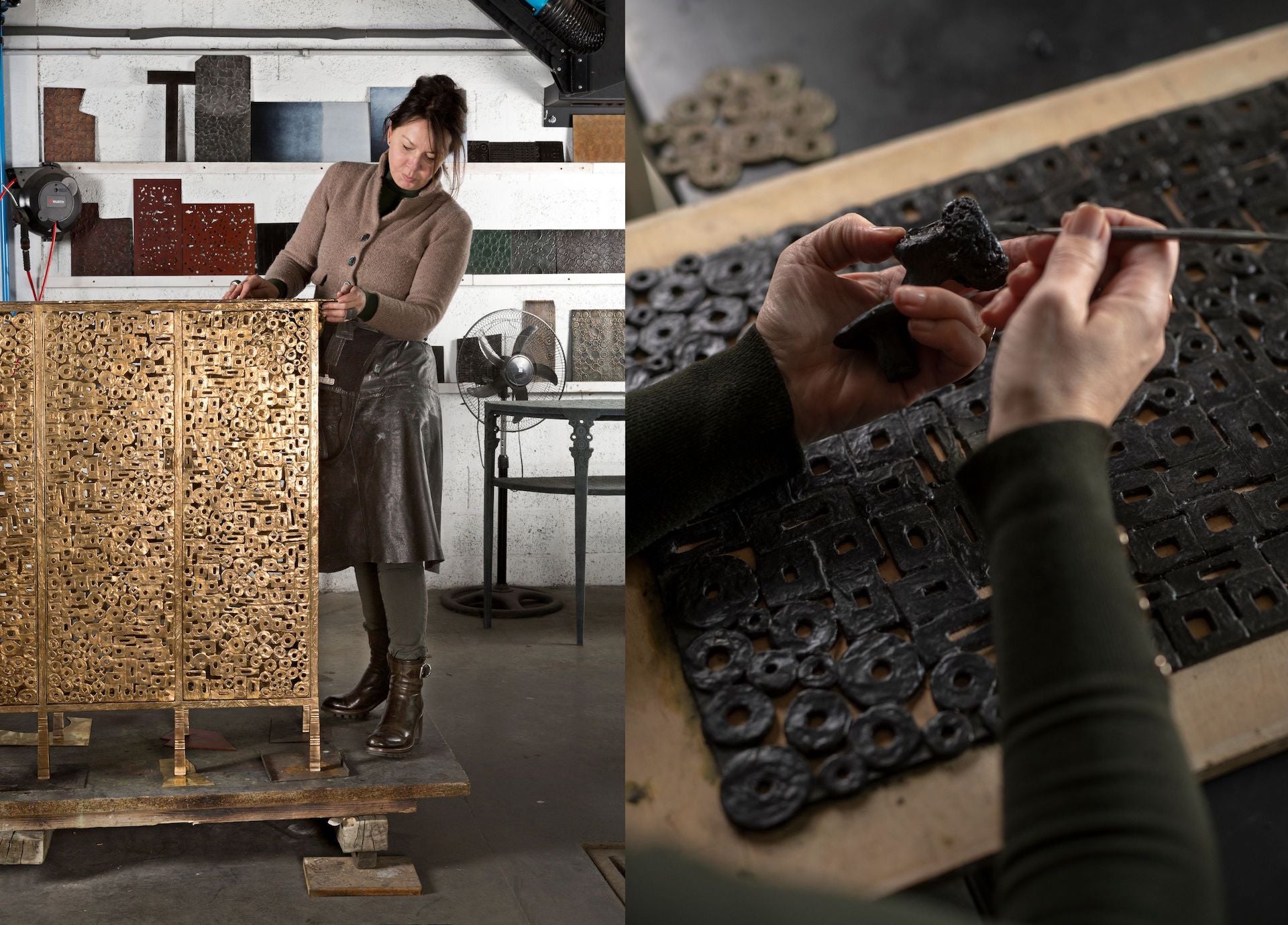Curriculum Vitae
Global By Design
With outposts in Paris, Los Angeles, and New York City, plus plans percolating for a Latin American presence, Carpenters Workshop Gallery shows no signs of slowing.
*This story was written by Ian Phillips, and originally appeared in Miami Design District Magazine. It has been slightly edited.
The beginnings of Carpenters Workshop Gallery, established in 2006, were not particularly auspicious. Cofounder Julien Lombrail recalls sleeping on the London couch of fellow founder Loïc Le Gaillard for the first two years. Leading designers like Ron Arad and Marc Newson would not give them the time of day (“We couldn’t get appointments with them,” recalls Lombrail), and their peers scoffed at their highly curated stands when they started exhibiting at international fairs. “They were museum-like presentations with only a handful of pieces,” explains Lombrail. “Other dealers made fun of us, saying that a container of items must have failed to arrive.”
How things have changed. Architectural Digest anointed Carpenters Workshop Gallery (commonly referred to simply as “Carpenters”) as “the go-to for cutting-edge, collectible design.” Their clients include the likes of Tom Ford and Kanye West, and their roster of designers boasts stars such as Andrea Branzi, Vincenzo De Cotiis, and Rick Owens. They’ve also shown furniture pieces by both Karl Lagerfeld and Virgil Abloh, and now have a total of five galleries—two in Europe (Paris and London) and three in the United States. The New York space is housed in a duplex penthouse in a Fifth Avenue building formerly occupied by the Japanese department store Takashimaya. The San Francisco address is the ornate Saint Joseph’s Church in SoMa, and the Los Angeles outpost was inaugurated at the end of June in a former guitar academy in West Hollywood. Today, the States account for more than 60 percent of Carpenters’ sales. “Americans are not afraid to spend large sums of money on exceptional projects,” states Lombrail. “For us, it’s a godsend.”

In attendance at the Los Angeles opening was another client, Brad Pitt, who came to check out Spanish-born, Eindhoven-based designer Nacho Carbonell’s first US solo show, where he presented a new body of work developed during the COVID pandemic. A return to his family home on the east coast of Spain near Valencia revived childhood memories of the sea and gave rise to a collection consisting of highly sculptural furniture covered in sand—applied by hand or with a scraper and mixed with glue and fishing net. “It was like building sandcastles with basic tools on the beach,” Carbonell told me.

Almost every profile of the gallery states that Le Gaillard and Lombrail are childhood friends, but in fact, though their fathers (an art dealer and an auctioneer, respectively) knew each other, they themselves were not introduced until 2006. By that stage, Le Gaillard had just opened a contemporary art gallery in a former carpenters’ workshop in London’s Chelsea district, and the two decided to go into business together. Within no time, they segued into design after noticing that the furniture in collectors’ homes was often not of the same quality as the art on the walls. “At times, it was not much better than Ikea,” says Lombrail.

Today, Lombrail oversees production and relations with designers while Le Gaillard deals with sales, finance, and strategy. “They’re very complementary,” says Carbonell. “At the same time, they share common goals and have non-verbal communication.” Together, they tend to favor strong, expressive, narrative pieces. In the French daily, Le Monde, journalist Marie Godfrain described their aesthetic as “imposing,” “slightly bling,” and “deliberately provocative.” Lombrail, however, points out that they are also fans of a more minimalistic style. An example is Rick Owens’ Plug Table. “Sideways on, it’s just a trapezoid with one line,” he notes. A term they themselves use often to describe their inventory is “functional art,” and, more than anything, they pinpoint work that displays both creativity and originality.
One designer with whom Lombrail has a quite particular relationship is Ingrid Donat, who also happens to be his mother. Donat worked with both Alberto and Diego Giacometti before embarking on her own artistic career, and describes her personal aesthetic as “a mix between art brut and great sophistication.” Along with Wonmin Park, Donat is one of two Carpenters’ designers who have permanent workshops at The Factory, an 86,000-square-foot production site at a former foundry in Mitry-Mory to the north of Paris. Some 40 fine artisans work there exclusively for the gallery. “For an artist, it’s exceptional to have such a set-up,” says Donat. “It makes everything possible, everything easy.” Her recent creations include Commode Skarabee, featuring two large, rounded doors whose shape she compares to scarab beetle wings. Made from bronze, it is decorated with the intricate, repetitive patterns characteristic of her work.

Such an in-house facility is surely unique, but quite typical of Carpenters’ approach. Le Gaillard has called the gallery “a war machine” and they don’t shy from making heavy investments. Some of the pieces they produce can cost upwards of $100,000. Not to mention high rents, some 100 employees, and constant plans to grow. Those plans include expanding the Paris gallery into an adjacent apartment, where they will present a selection of items in a more domestic-style setting. They are also looking to develop their presence in Latin America and recently organized a pop- up show in Monterrey, Mexico. “We’re not afraid of taking risks,” says Lombrail. “You need a bit of tension to keep moving forward.”
